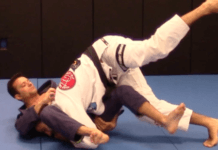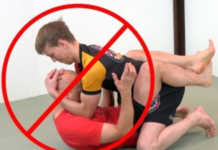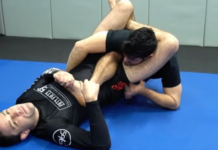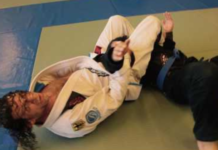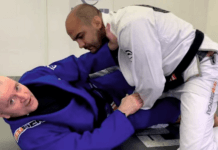Turtle guard is a little forgotten and underestimated in BJJ. And yet can be powerful if you know how to use it. If you didn’t know that you can dominate your opponent from this position and generally do not know what’s going on with it, it is because little is said about it during jiu-jitsu classes. Therefore it is high time to change it and refresh this position. Below you will find all you need to know about BJJ turtle guard.
What is BJJ turtle guard?
First of all, a turtle guard isn’t a guard in the traditional sense. Traditionally a guard requires some use of your legs as a barrier between you and your opponent. And you won’t find it in a turtle guard. It is also no longer officially called a guard because of rules and point system change. It does not mean, however, that it is no longer useful. So, generally, it is a method of turning the defensive turtle into an offensive position. You rely here on your opponent’s commitment to take your back. It requires a lot of feints and baits. But when the other person falls for your tricks you got a series of sweeps and maneuvers here to set your opponent off balance and gain an advantageous position.
How you can use it?
The turtle is usually considered a defensive position in BJJ and other grappling arts. It is a good way to defend aggressive attacks and provide you a moment to catch your breath and think about your next move. However, it can be much more than that. In fact, the turtle guard can be a very useful attacking option to surprise your opponents from an unexpected position. It can be very powerful if you allow it.
So how do you get offensive from here? There are several options for this, but they all have one point in common. You need to overcome your fear of giving away positions first, and only then you’ll discover the options BJJ turtle guard offers. The most important thing here is your mindset. Of course, you must also have the technical knowledge, but first, you have to be willing to go for it. You cannot treat the turtle guard only as a defensive position. Look at it rather as the ultimate surprise attack position. So, you can’t act like a rock in a turtle position. You must look to go for sweeps, transition into takedowns, or hit submissions straight away! Below you will find examples of what exactly you can do.
Simple but effective
The basic thing you can do from the turtle position is not fancy at all. It is just going back to safety and regaining full guard. To do so you need to kick your nearside leg back. Once the leg is out, place it behind your opponent. As a next step, put your opposite sidearm to build a base. Now you need to block the near side leg of the opponent with your inside arm. Just pick your hips up and sit through right into the closed guard. It is really simple but effective.
There is also a bit more advanced version of escaping the turtle guard. It is turning away. This move is a great option when you do it on your terms. If you want it to work, you cannot allow your opponent to do it. If he or she causes you to turn they’ll either get side control or your back. However, if you’re the one initiating the movement though, you’ll be able to re-guard easily. As a first thing, focus on keeping your outside elbow close to your thigh. Then, open up your hips, and get into a shoulder roll. It’s not only going to get you out, but it is going to completely turn the tales. You’ll end up on the top with a clear path to back control.
When you’re doing this escape from the turtle guard, the point of reference is to get to a double underhook guard- kind of position. Once there, you should use your hips to drop the weight down ending up in guard. An alternative is to go for a triangle choke and finishing right then and there.
Attacking from turtle guard
In the hierarchy of understanding the turtle guard, attacks are going to have to wait. First, make sure your chin is tucked in nicely and your arms and legs are tight. The basic principle of the turtle position is to leave no space. Leaving space is giving your opponent an opportunity to break your structure.
Your attacks start with your near side leg once again. This time though, instead of just kicking back you’re going to hook the opponent’s near side leg. If you can use the inside arm for the same thing, just do it. It’ll provide you with much better control over the opponent. Then just roll over your outside shoulder, holding on tight to the leg. What you’re essentially doing is a Víctor roll from the knees, which means you end up with a tight kneebar when the roll ends.
Furthermore, you can get a cool kimura straight off the rolling escape. As you enter the shoulder roll, make sure you control the opponent’s outside arm with your outside arm. When you will be halfway through the Granby, sneak in your other hand and lock a figure four grip on the other person’s arm. Once you have the grip just keep turning and you’ll end up in topside control. The finish is easy from there, just like a regular Kimura.
Remember!
BJJ turtle guard is a very “flowy” guard. If you want to use it, you really have to hit the right moment. Also, remember there are many potential drawbacks here. First, in turtle position, you’re giving up your back, which is a huge no-no in BJJ. Another minus is that if the opponent is ready, they can counter the turtle guard perhaps better than they can with most other guards. It is because you are already in a “bad” position. It all means timing is key here. To enjoy success with BJJ turtle guard, one must anticipate their opponents’ movements and roll at the appropriate moment.


